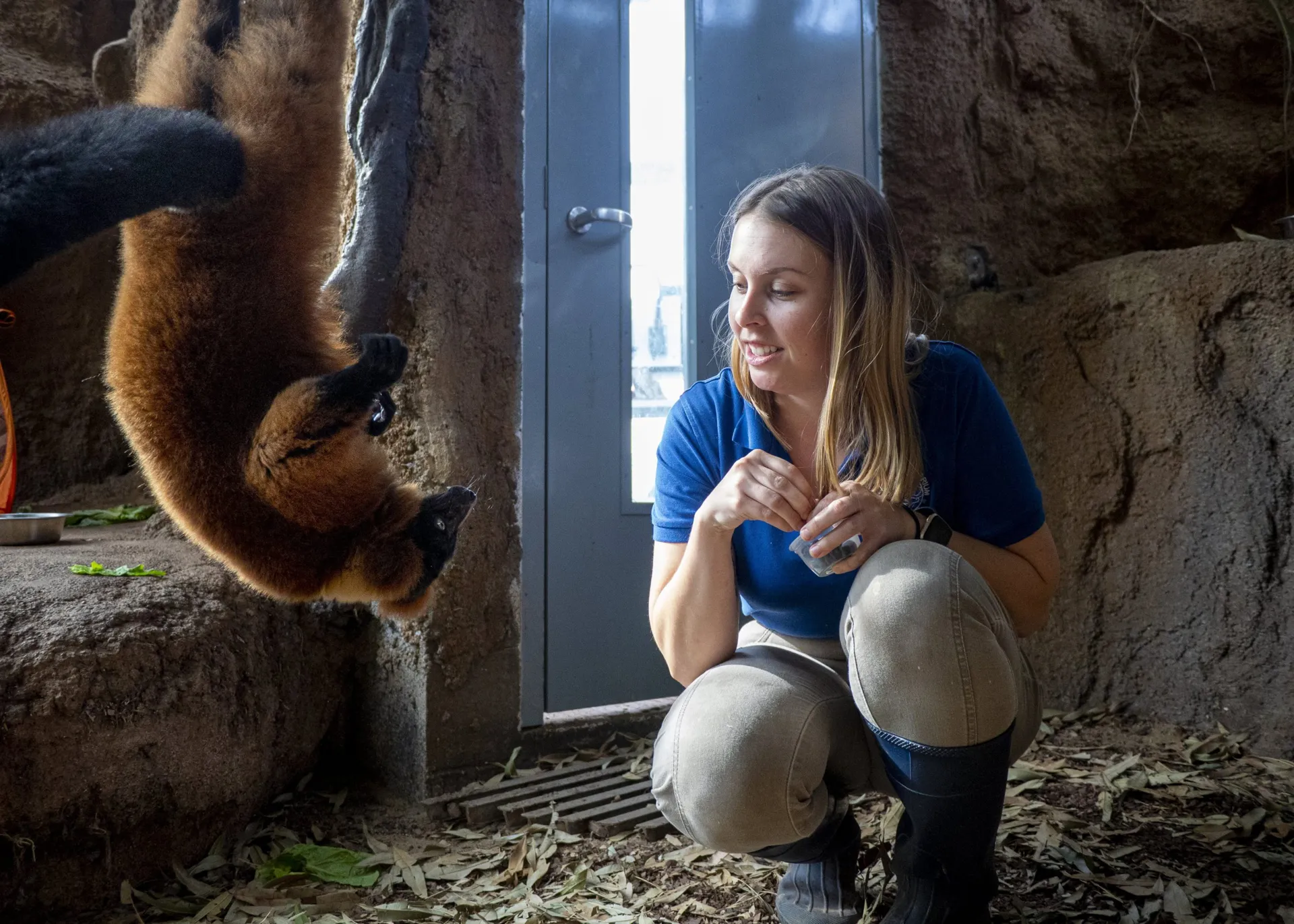Whether it’s patching up a penguin’s beak, x-raying an endangered turtle for signs of eggs or performing a routine checkup on a River Otter, veterinarian Dr. Chris Keller has plenty on his plate at the Tennessee Aquarium.
Thanks to his efforts and standard of care, many of the animals in the Aquarium’s living collection are at — or in some cases, far exceeding — their life expectancy. Just like in humans, geriatric animals tend to become more susceptible to a host of conditions that can impact their quality of life. And also like humans, it’s often those closest to them, not their doctor, who are the first to spot signs of trouble.
“Typically, the people who live and breathe and care for them every day are the ones who will see changes in animals as they age,” Keller says. “Keepers will see animals acting a little bit odd or not doing what they’re normally prone to do. They let me know as soon as they see something wrong.”
In March, lemur expert and Animal Care Specialist II Maggie Sipe began to suspect something was off with Josephine, a female Red-ruffed Lemur and the eldest resident of the Lemur Forest exhibit.
As bands of spring thunderstorms buffeted downtown Chattanooga, Josephine wasn’t reacting to the weather as strongly as she usually did. She also seemed stiff and sore, spending more of her time napping in the planters and less chasing the other lemurs around the exhibit.
“For her to do that sometimes is seasonal,” Sipe says. “Or with those big pressure systems coming through, we thought it could have been arthritis soreness.”
Having just celebrated her 20th birthday on May 31, Josephine is the seventh oldest female Red-ruff living in an American zoo or aquarium. She is already well past the threshold for her species’ median life expectancy in human care, which can last anywhere from 15 to 30 years.
Sipe and Josephine’s other caretakers noted the change in her behavior and brought it to Dr. Keller’s attention. After ruling out an injury and seeing no improvement after allowing Josephine time to recuperate off exhibit, it became clear there was another underlying issue at work.
A physical exam and blood tests revealed that Josephine was in the mid to late stages of kidney failure, a condition which is not uncommon with older lemurs in human care.
“Not unlike elderly cats, there tends to be a lot of renal failure in elderly lemurs,” Dr. Keller says. “This is a specific instance of a disorder that’s very common in these older animals.”
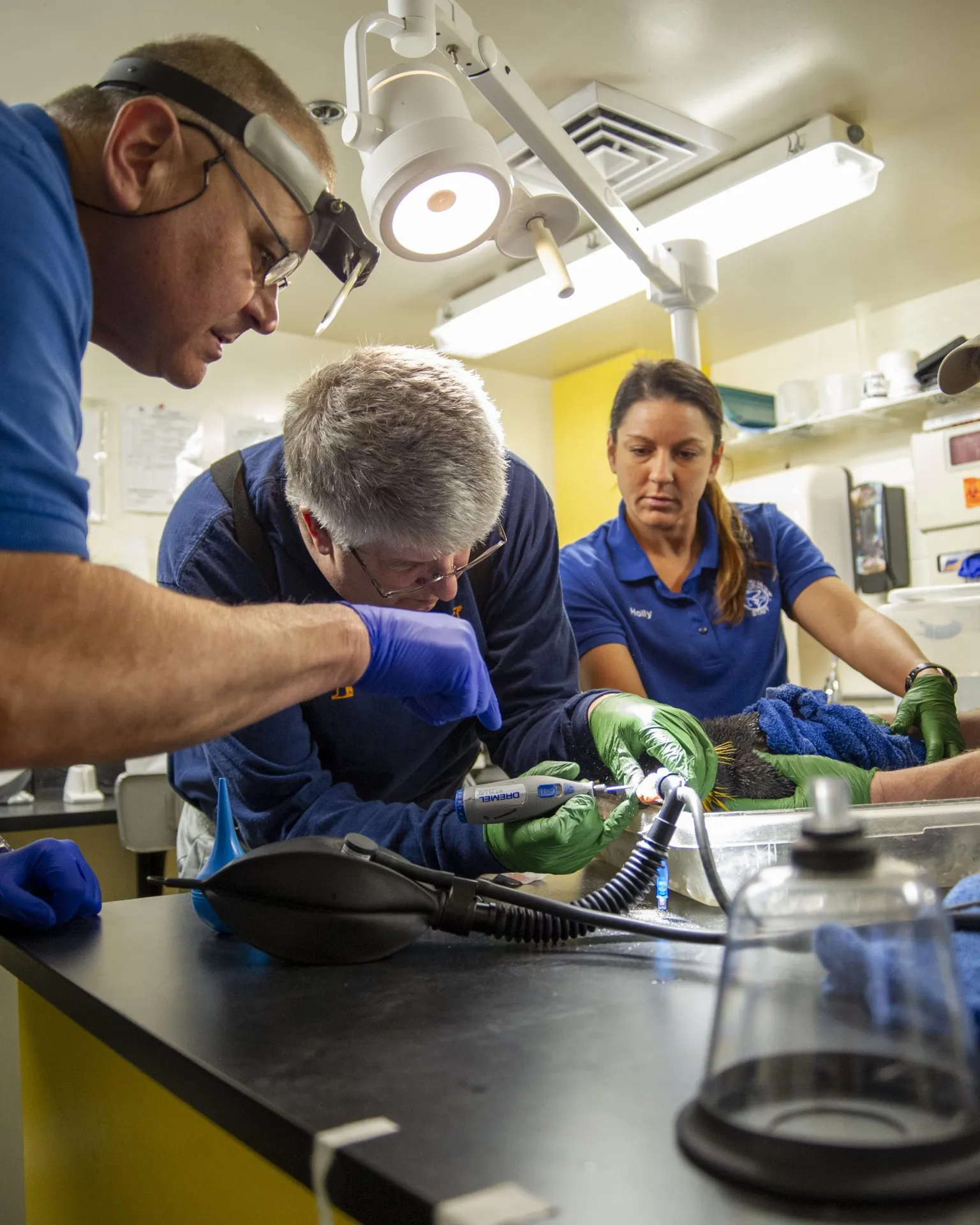
Speaking up for animals
Even with dedicated daily care, it’s not uncommon for medical conditions to slip under the radar. Most animals strive to appear the picture of health even when sick or injured as a form of self-defense. Combined with their inability to communicate symptoms to their caretakers, that can make it difficult to catch conditions even with constant observation, Sipe says.
“In the wild, many animals have adapted to hide any sign that they’re sick until it’s too late for us to know or do anything about it,” she explains. “In the wild, if they gave any indication that they weren’t feeling good, they would be more vulnerable to predators. Or in the case of primates like lemurs, if they show a sign of weakness, they can get kicked out of their social group.
“For these guys, by the time you start noticing things, you may be able to catch it early enough to do something, but oftentimes, it’s too late.”
But, she adds, that’s why animal care specialists are so important. They can serve as a vital link between animals and veterinary professionals.
“I’m their voice,” she says. “I know when they’re not feeling good, and I know when they’re normal. It’s my job to care, and I put everything I have into this, so it can be very emotionally draining sometimes when things aren’t going so well.”
Thanks to the dedication of Sipe and other caretakers — as well as ready access to veterinary attention and quality nutrition — many animals at the Aquarium enjoy lifespans far longer than those of their wild counterparts.
“Philosophically, as a staff, we have felt that providing animals with ideal circumstances — low stress, good nutrition and an environment that lends itself to them being ‘happy’ — is really, really important,” Dr. Keller says. “That approach and that degree of care is reflected so well in the health and the wellbeing of those animals and the fact that they’re getting so old.”
In the wild, many animals have adapted to hide any sign that they’re sick until it’s too late for us to know or do anything about it.
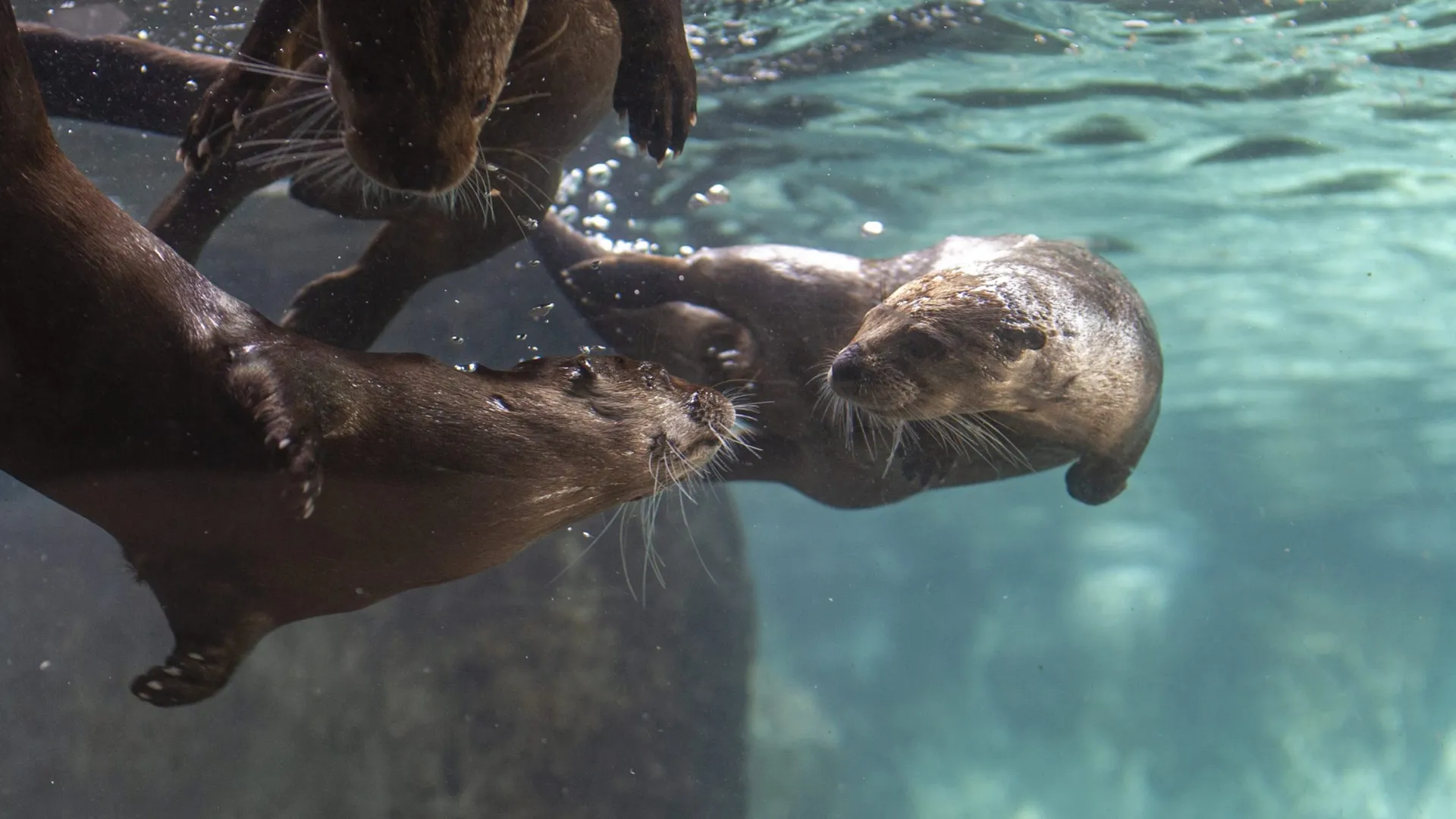
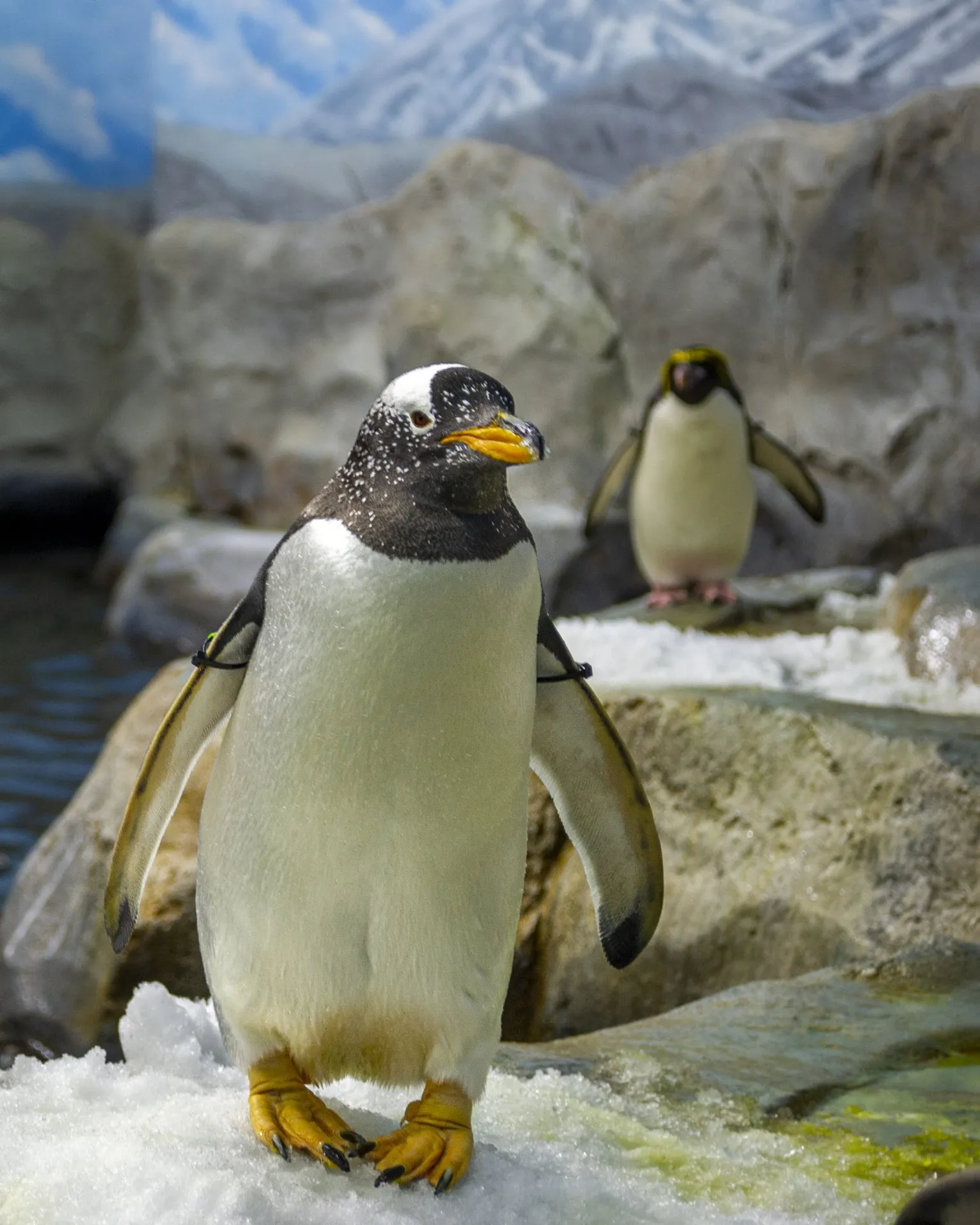
Living their best lives
Although some animals arrive at the Aquarium as wild rescues without a recorded birth or hatch date, size, weight and other measurements can provide a reasonably accurate estimate of their age. And as the Aquarium fast approaches its 30th birthday, some of its residents aren’t far behind.
This February, Delmar, the elder states-otter in River Otter Falls, turned 16. Several other otters in the Aquarium’s romp lack an officially recorded birthdate but are estimated to be between 12 and 20 years old.
In the wild, North American River Otters usually live 8 to 12 years, with those in human care have a median life expectancy of 16 to 18 years. The oldest currently living North American River Otter is 23 years old.
That the Aquarium’s otters are doing well — “in top notch health,” says Senior Animal Care Specialist Jennifer Wawra — is a testament to their living conditions and the quality of the care they receive.
“We have some aging teeth and eyes, but otherwise, they seem to be doing well,” Wawra says. “We monitor daily through training and visual observation to ensure they are in peak condition.”
In Penguins’ Rock, the colony of Gentoo and Macaroni Penguins ranges in age from a pair of yearlings that hatched in June 2020 to Peep, a Gentoo Penguin who turns 30 this year. Four other birds, three Gentoos and a Macaroni, are all at least 25 years old. These birds’ wild cousins in Antarctica can expect to live 15-20 years, but the optimal conditions provided in human care do much to prolong and improve their lives.
But just like humans, every animal ages differently, says Senior Aviculturist Loribeth Lee,
“Some people live to 100, drink soda every day and run half-marathons, and then you have people who are 60 and are confined to a wheelchair,” she says. “The same is true of penguins as with any animal. It’s individual with every bird.”
In the gallery, Lee and the other specialists caring for the penguins keep a weather eye out for older birds developing late-life conditions, many of which also afflict older humans, including cataracts, arthritis and compromised immune systems.
“Those of us who are used to watching them will notice when something is different and say, ‘Bug doesn’t look like she’s laying right,’ We pay attention to that,” Lee says. “It’s a fine line knowing what’s normal for the bird and what’s abnormal. The only way we’ll know that is to observe them.”
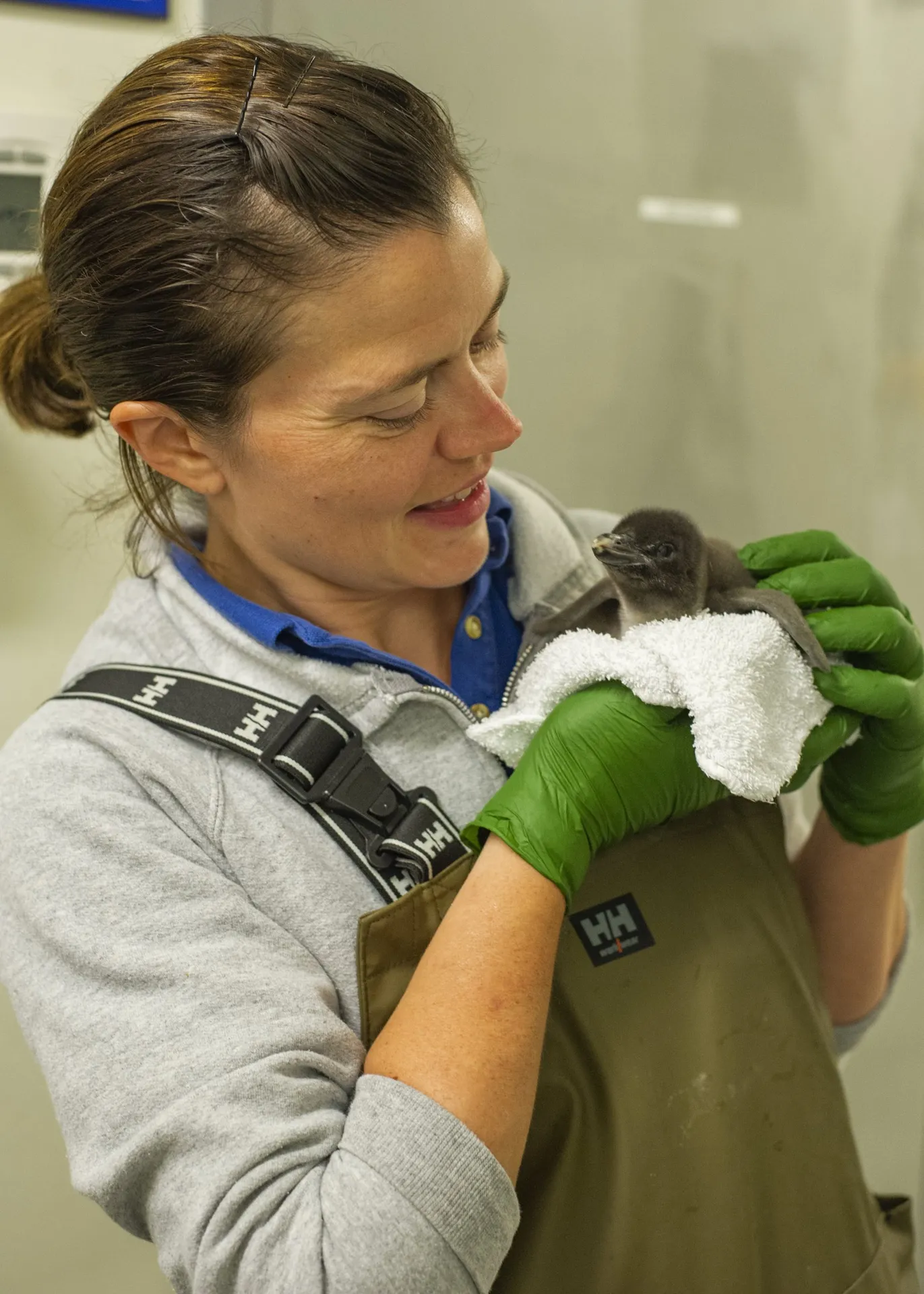
Thriving rather than surviving
Thanks to their daily interactions with the animals, keepers often can make slight adjustments to diet or introduce enrichment opportunities that can improve and prolong the animals’ lives without medical intervention.
“We have noticed that if they carry extra weight as they age that, like us, it can be more difficult for them to run and jump around,” Wawra says of the otters. “Thus, we watch their weight weekly and adjust diets as needed.”
The toothy Sand Tiger Sharks swimming through the Secret Reef are some of Ocean Journey’s oldest residents. The shiver of four Sand Tigers were estimated to have been born between September 1991 and September 1992. That makes them as old, or older, than the Aquarium itself and nearly twice as old as the 13- to 15-year estimated life expectancy of wild Sand Tigers.
“We’ve been very fortunate with these animals,” says Thom Demas, the Aquarium’s director of aquatic collection and life support systems. “All the staff observation and the effort of our veterinary teams are a big part of their longevity.”
As animals age, they experience the onset of a range of health conditions similar to those experienced by elderly humans. Keepers caring for geriatric animals must be wary for and adapt to the onset of conditions such as deteriorating joint and dental health, diminished musculature and range of motion, impaired vision or hearing and — as with Josephine — diseases affecting the function of vital organs.
That some of those conditions, such as kidney failure, are occurring at all is a testament to the animal’s longevity. With an estimated life expectancy in the wild of 15 years, wild Red-ruffed Lemurs don’t typically last long enough to develop the kinds of disorders that those in human care can experience.
“They’re just surviving day to day in the wild,” Sipe says. “In professional care, you start seeing more issues like this. It’s the same with humans. Now, we’re living longer, and we have access to professional care, so you see illnesses like that cropping up.
“You wouldn’t see that in the wild. They don’t live long enough to develop those problems.”
Adjusting to age
Care regimens for geriatric animals are often specially adapted to accommodate special needs resulting from diminished function or overall health. Measures that can be implemented include feeding animals separately from their exhibit mates, changing or supplementing their diet and changing the layout of their habitats to make it easier to navigate.
“We try to address the behavioral and environmental aspects as much as the physical ones,” Dr. Keller says. “We tend to look at the emotional and physical and environmental needs first and work on the rest of it when the time comes. We take special pains to make sure we’re caring for them in a way that might be different than for a younger animal.”
Whatever approach is deemed most appropriate, the animal care specialists who work most closely with the animals are at the frontline of ensuring the wellbeing of the Aquarium’s aging residents.
Whether it’s a newly hatched Gentoo Penguin chick or a White’s Tree Frog that has more than doubled its median life expectancy, however, the Aquarium’s overriding concern with all its animals is ensuring its quality of life.
To accommodate Josephine’s diminished ability to leap, additional perches have been placed in her off-exhibit resting area to enable her to move more freely. Moving forward, her condition will be even more closely monitored. Every day, her behavior and mood are observed and recorded in a logbook. Based on their observations, the keepers assign each day a “wellness score,” ranging from one to five, with five being the happiest and healthiest she could possibly be.
“I’m making 100 decisions a day, at this point, about her care, how to manage her health moving forward,” Sipe says. “I’m evaluating what’s working and what’s not working and thinking about what I can change to make her as comfortable as possible from here on out.”
Josephine will continue to be offered the choice to go on exhibit if she wishes, but the primary concern now is making her life easy and accommodating the needs of her changing condition, says Curator of Forests Kevin Calhoon.
“We’re trying to keep things as low-stress as possible,” he says. “She’ll be on exhibit some, depending on how she’s doing. We’re letting her choose more what she wants to do now and not forcing her to do anything.”
Regardless of their age, the conditions at the Aquarium are made to be ideal as possible for every animal. Especially as they age, however, the Aquarium’s low-stress environment, ready access to food and the attentive care of specialists like Sipe help ensure that its oldest residents’ twilight years are golden.
“In essence,” Dr. Keller says, “this is a good place to be if you’re an animal, but it’s a great place to be if you’re an older animal.”
We tend to look at the emotional and physical and environmental needs first and work on the rest of it when the time comes. We take special pains to make sure we’re caring for them in a way that might be different than for a younger animal.
